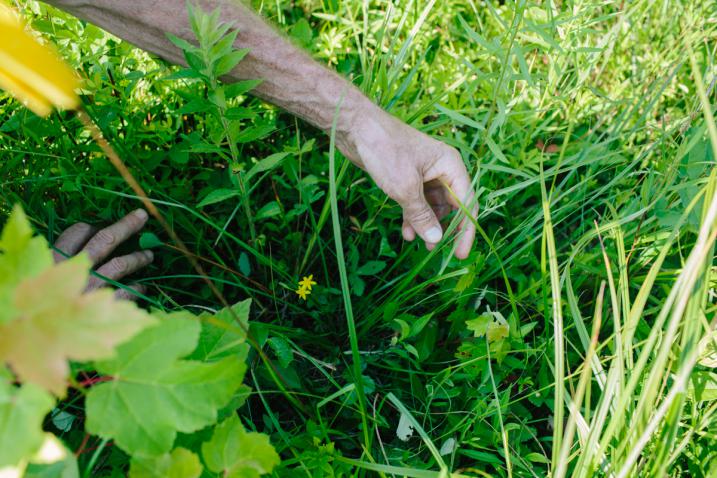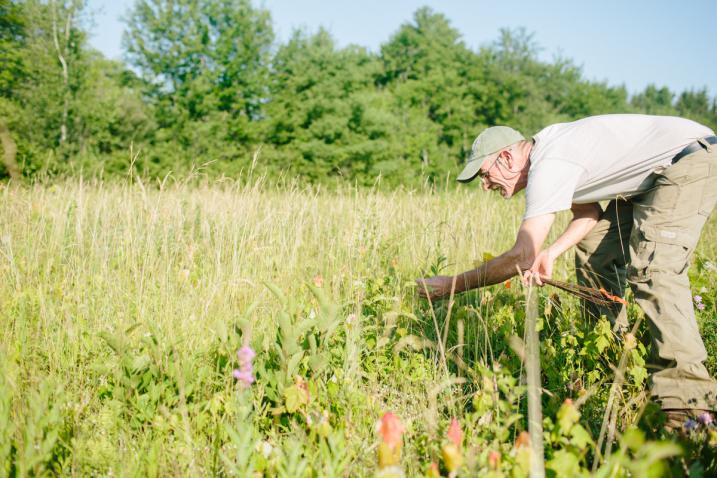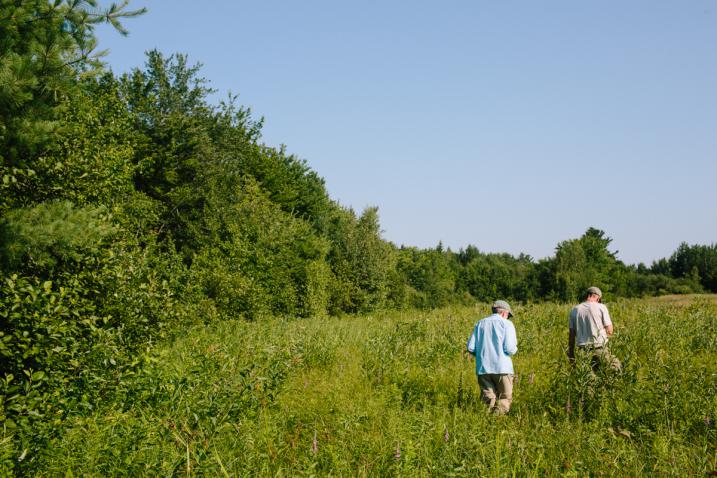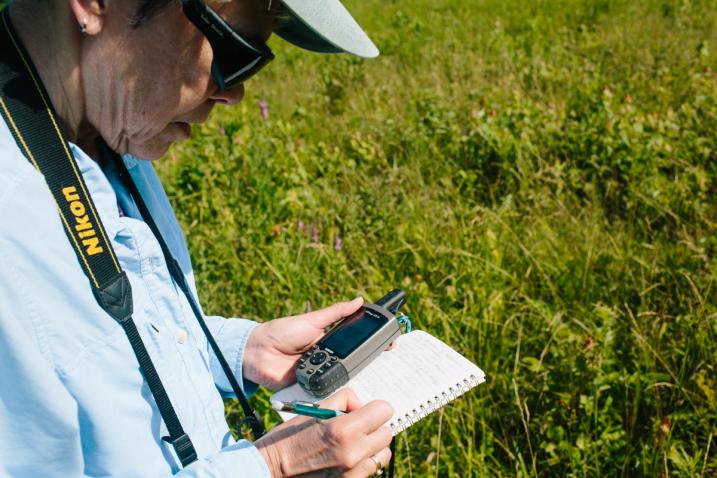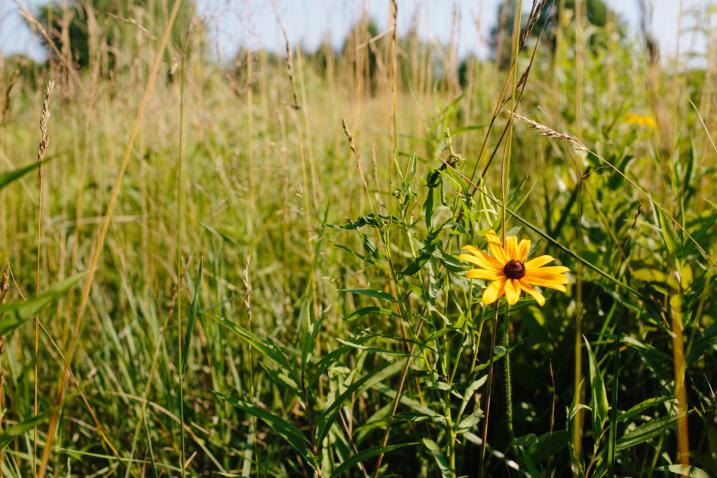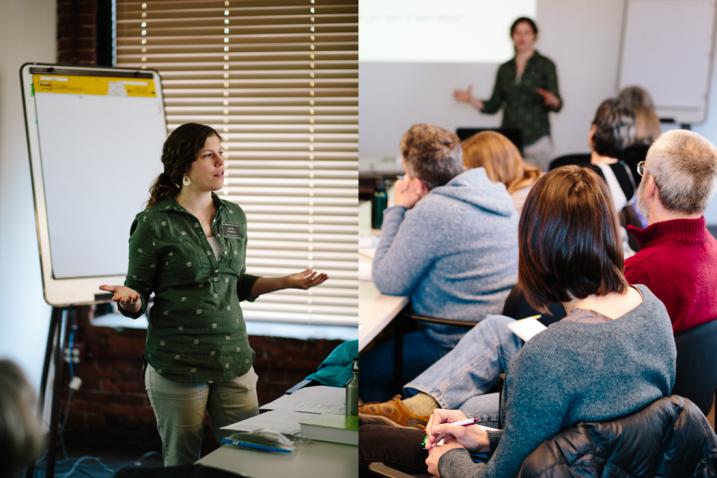In Search of Rare Plants
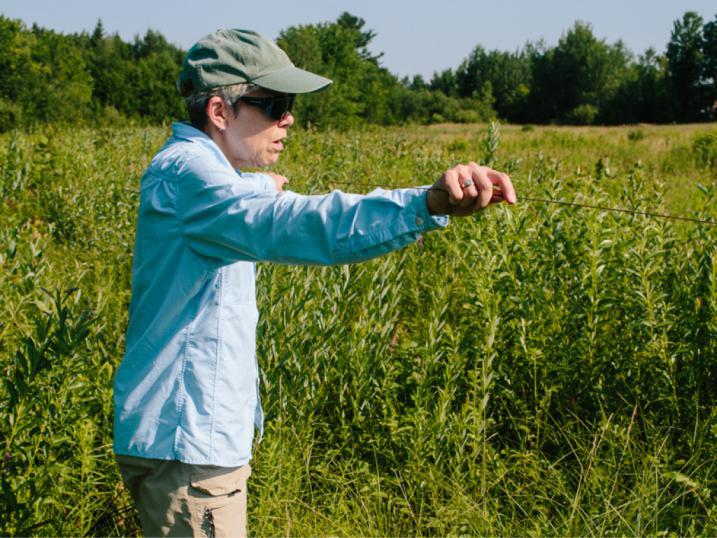
Sweating profusely under the hot July sun I cursed the need for tick prevention--long pants tucked into wool socks--while I searched in a field full of thigh-high grasses and weeds. The heat and humidity already present at 9 a.m. made me oddly thankful for my early alarm that day. It was going to get much hotter.
“Here’s another one!” called out Deb Lievens, a long-time volunteer with the New England Plant Conservation Program. I pulled my attention away from my indistinguishable patch of grass and joined Deb and volunteer Scott Young just a short distance away.
My search party of three gathered around Deb’s spot. There, barely visible among a sea of green, were two tiny yellow flowers near the base of the grass. This diminutive little wildflower is called Hypoxis hirsuta, or common star-grass.
But this star-grass isn’t actually that common. Its native distribution spans every New England state, but much of its range has been lost. It’s considered extirpated in Maine, which means it has not been seen for many years, with a low likelihood of rediscovery. In New Hampshire, it’s considered rare or threatened.
22% of New England’s native plants are rare or deemed historic. On average, rare plants have lost 67% of their known range. Why does this matter? Plants are the habitats that support wildlife and important ecosystem services for humans. Plants provide oxygen, filter air pollutants, and cleanse water. They can lessen floods and help control erosion. Plants also provide us with fuel, fiber, food, and medicine.
Plant Conservation Volunteers like Deb and Scott give their time to help conserve and promote New England’s native plants. Since 1998, hundreds of volunteers with the New England Wild Flower Society have conducted field work and provided invaluable data about rare, native plants in all six New England states.
Deb got started with the Plant Conservation Volunteers after getting her feet wet with other volunteer pursuits. In the early 90s, she got involved with her local conservation commission, which was working on a wetlands inventory at the time. She later boosted her natural resources knowledge with UNH Cooperative Extension’s Natural Resources Stewards program, then called the Community Tree Stewards.
Scott is also on his town’s conservation commission and has been involved with the Plant Conservation Volunteers for about 5 years, as well as UNH Cooperative Extension's NH Coverts Project, a wildlife-oriented volunteer training program. Scott has long been interested in birds and dragonflies, having participated in a dragonfly survey for NH Audubon and various “bio blitzes” where volunteers attempt to identify as many natural species as they can during a set time.
Volunteer plant surveys, like the one we conducted on that hot summer day, are important for monitoring the health of rare plants and determining possible threats to their populations. Volunteers are tasked with recording the number of plants they find and any other information about the site.
Throughout our survey, Deb and Scott compared notes about other surveys they’ve done or interesting plants they’ve come across in their free time spent outdoors. Latin names rolled off their tongues, but sounded like gibberish to me. Retroflexa, hitchcokiana, sparganium!? It’s helpful for volunteers who join the plant conservation program to have some botanical knowledge and plant identification skills.
For beginners, Go Botany is a great website to learn about New England plants and how to identify them. It includes a simple key to help beginners as well as the technical dichotomous key designed for experienced botanists. You can also use Go Botany to look up plants you know and find out more about their history, distribution, and other characteristics. For instance, I looked up one of my favorite flowers, the black-eyed susan, and I learned its Latin name, Rudbeckia hirta, and that it’s non-native to most of New England!
Through the Plant Conservation Program, volunteers not only participate in citizen science research that helps make real-life conservation decisions, but volunteers meet like-minded people and can attend field trips lead by professional botanists. In addition, there is an annual spring training in each New England state. At the training, new volunteers get a crash course in the history of the New England Wild Flower Society and the Plant Conservation Program from coordinator Laney Widener, pictured below.
There are important guidelines and protocols for new volunteers. Given the sensitive nature of rare plants, all volunteers must sign a confidentiality agreement and there are strict rules ensuring land owner permission for plant surveys. I attended the 2016 PCV training in New Hampshire, which was well attended by nearly 30 new and returning volunteers.
"I love knowing that I am actively contributing to the conservation and understanding of our native flora through working with citizen scientists in our Plant Conservation Volunteer Program. I am grateful to work with such passionate and dedicated volunteers!" said Widener.
